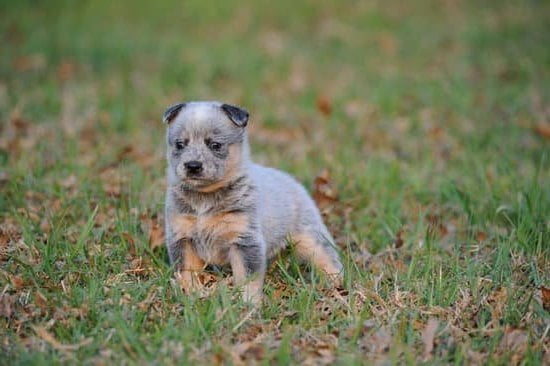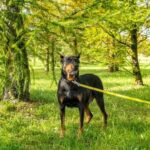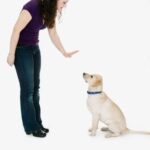Dog attacks on other dogs can be a concerning and potentially dangerous behavior. Knowing how to train your dog to not attack other dogs is crucial in maintaining a safe and harmonious relationship with your furry friend. Understanding the underlying reasons behind dog aggression is the first step in addressing this issue effectively.
There are several factors that may contribute to a dog’s tendency to attack other dogs, including fear, territoriality, resource guarding, or past negative experiences. By recognizing these triggers, pet owners can better anticipate and prevent potential conflicts. It is essential to observe and identify any warning signs of aggression in your dog, such as growling, baring teeth, or stiff posture, to intervene early on.
Establishing a strong foundation for obedience training is vital in shaping your dog’s behavior towards other dogs. Consistent training practices that promote positive reinforcement can encourage good behavior and discourage aggression. Additionally, socialization techniques that gradually expose your dog to other dogs in a safe environment can help them become more confident and relaxed in their interactions. By following these training basics and utilizing desensitization exercises, you can effectively curb your dog’s aggressive tendencies towards other dogs.
Signs of Aggression
Aggression in dogs can manifest for a variety of reasons, including fear, territoriality, or even frustration. Understanding the root cause of your dog’s aggression is crucial in addressing and preventing attacks on other dogs. One common trigger for dog-on-dog aggression is a lack of socialization during the early stages of a dog’s life. Dogs that have not been properly exposed to other dogs may feel threatened or anxious when encountering them, leading to aggressive behavior.
Recognizing Warning Signs
It is essential for dog owners to be able to recognize the warning signs that their dog may exhibit before escalating into an attack. Some common indicators of potential aggression include stiff body posture, growling or snarling, raised fur along the back, and intense staring at another dog.
If you notice any of these behaviors in your dog, it is important to address the situation promptly to prevent any harmful incidents from occurring. In some cases, aggression can also be triggered by specific environmental factors or past traumatic experiences, so it is important to consider the context in which your dog displays aggressive behavior.
Responding Appropriately
When you observe signs of aggression in your dog towards another canine, it is crucial to respond calmly and assertively. Avoid yelling or physically punishing your pet as this may escalate their anxiety and aggression. Instead, try to redirect their attention away from the trigger and use positive reinforcement techniques to encourage calm behavior.
Consistency in training and setting clear boundaries for your dog can also help prevent future instances of aggression towards other dogs. By understanding how to train your dog to not attack other dogs effectively, you can create a safe and harmonious environment for both your pet and others they may encounter on walks or at the park.
By being proactive in recognizing warning signs and addressing aggressive behavior promptly with appropriate training techniques, you can help your dog learn how to socialize peacefully with other canines. Remember that every dog is unique, so patience and consistency are key when it comes to modifying their behavior.
If you are struggling with managing your dog’s aggression towards other dogs despite your best efforts, do not hesitate to seek professional help from a qualified trainer or behaviorist who specializes in dealing with canine aggression issues.
Training Basics
Setting Clear Rules and Boundaries
To effectively train your dog to not attack other dogs, it is essential to establish clear rules and boundaries from the very beginning. Dogs thrive on structure and consistency, so make sure to set guidelines for behavior that are easy for your furry friend to understand. Consistency is key in reinforcing these rules, so make sure that all family members are on the same page when it comes to training your dog.
Basic Obedience Training
Before addressing any issues of aggression towards other dogs, ensure that your dog has a solid foundation in basic obedience training. Commands such as “sit,” “stay,” “come,” and “heel” are crucial for effective communication with your pet. By establishing a strong obedience foundation, you can better control your dog’s behavior in situations where they may feel inclined to act aggressively towards other dogs.
Building Trust Through Leadership
Dogs naturally look to a leader for guidance and protection. By demonstrating strong leadership skills and establishing yourself as the alpha in the relationship, you can build trust with your dog and reduce the likelihood of aggressive behavior towards other dogs. Remember to always remain calm, assertive, and consistent in your training efforts to foster a trusting bond with your furry companion.
Socialization Techniques
Introducing your dog to other dogs in a safe and controlled environment is essential in preventing aggressive behaviors towards other canines. Socialization plays a crucial role in shaping your dog’s behavior and how they interact with their fellow furry friends. By following some simple techniques, you can help your dog become more comfortable and confident around other dogs.
- Start early: The earlier you start socializing your dog, the better. Puppies go through a critical socialization period between 3 to 14 weeks old, where they are most receptive to new experiences. Exposing them to positive interactions with other dogs during this time can set them up for success in the future.
- Choose the right setting: When introducing your dog to other dogs, pick a quiet and neutral location where distractions are minimal. A fenced-in backyard or a calm park without too many people can be ideal for these initial introductions.
- Monitor body language: Pay close attention to your dog’s body language and behavior when meeting new dogs. Look for signs of stress, nervousness, or aggression such as growling, raised hackles, or stiff posture. If you notice any warning signs, calmly remove your dog from the situation before it escalates.
Using these socialization techniques can help ensure that your dog learns proper behavior around other dogs and reduces the likelihood of aggression towards them. Remember that each dog is unique, so be patient and consistent in your training efforts. With time and practice, you’ll be able to enjoy peaceful interactions between your furry friend and their canine companions without any fear of attacks.
Positive Reinforcement
When training your dog to not attack other dogs, it is crucial to use rewards strategically. For example, if you are introducing your dog to another canine and they remain calm and friendly, be sure to reward them immediately with a treat or verbal praise.
This will help reinforce the idea that being calm around other dogs is desirable and will lead to good things. Conversely, if your dog shows signs of aggression, such as growling or lunging towards another dog, ignore that behavior and do not reward it.
Consistency is key when using positive reinforcement in training your dog. Make sure that every time your dog behaves well around other dogs, they receive a reward. Over time, this will help create a strong association between good behavior and positive outcomes. Remember that every dog is unique, so be patient and adjust your training methods as needed based on your pet’s responses.
| Positive Reinforcement Tips | Benefits |
|---|---|
| Reward good behavior immediately | Creates association between calmness and positive outcomes |
| Ignore aggressive behavior | Avoid reinforcing undesired actions |
| Be consistent with rewards | Establishes strong connection between behavior and rewards over time |
Desensitization Exercises
One effective method of desensitization is counterconditioning, which involves pairing the presence of other dogs with positive experiences for your pet. For example, whenever your dog sees another dog from a distance without displaying aggression, reward them with treats or praise. This helps create positive associations with encountering other dogs and can help shift their mindset from fear or aggression to calmness.
Another key aspect of desensitization exercises is controlling the level of exposure to other dogs. Start by introducing your dog to well-behaved and calm dogs at a safe distance where they feel comfortable and not threatened. As your dog becomes more relaxed in these situations, gradually decrease the distance between them and other dogs.
By slowly increasing exposure within their comfort zone, you can help build their confidence and reduce reactivity towards other dogs. Remember that every dog is different, so it’s essential to tailor the desensitization process to your pet’s individual needs and progress.
Seeking Professional Help
If your dog is displaying aggressive behavior towards other dogs, despite your best efforts in training and socialization, it may be time to seek help from a professional dog trainer or behaviorist. These professionals have the expertise and experience to address complex behavioral issues and provide tailored solutions for your specific situation.
Professional dog trainers and behaviorists can conduct a thorough assessment of your dog’s aggression and create a customized training plan to address the underlying causes. They will work with you to implement strategies that focus on managing your dog’s reactivity and promoting positive interactions with other dogs.
It is important to consult a professional if you feel overwhelmed or unsure about how to effectively train your dog to not attack other dogs. They can offer guidance on techniques such as counter-conditioning, desensitization, and structured obedience training to modify your dog’s behavior gradually over time. By enlisting the help of a professional, you can increase the chances of successfully addressing your dog’s aggression issues while ensuring the safety of all animals involved.
Remember, seeking professional help is not a sign of failure but rather a responsible step towards improving your dog’s behavior and quality of life. With the guidance and support of a skilled trainer or behaviorist, you can work towards creating a harmonious relationship between your dog and other animals in the community. Stay committed to the training process and remain patient as you navigate this journey towards a more peaceful coexistence for your furry friend.
Safety Precautions
Dog owners must be proactive in ensuring the safety of their pets, especially when it comes to preventing dog attacks on other dogs. By taking the right precautions and implementing proper training techniques, pet parents can mitigate the risk of aggressive behavior in their furry companions.
To help prevent any potential incidents, here are some safety precautions to consider:
- Always keep your dog on a leash when out in public or in areas where they may encounter other dogs. This will give you better control over your pet and prevent them from running off and potentially getting into a scuffle with another dog.
- Avoid placing your dog in stressful situations where they may feel threatened or anxious. If your dog is not comfortable around other dogs, do not force interactions and instead work on desensitization exercises to gradually acclimate them to being around other canines.
- Be aware of your surroundings and keep an eye out for any signs of potential triggers that may cause your dog to become aggressive towards other dogs. This could include things like loud noises, sudden movements, or unfamiliar environments.
By following these safety precautions, pet owners can significantly reduce the chances of their dog attacking other dogs and promote a safe and harmonious relationship between pets and their fellow canine companions. Remember that responsible ownership also entails being prepared for any situation that may arise when out with your furry friend.
Remember, it is essential to educate yourself on how to train your dog to not attack other dogs properly by seeking professional help if needed. Consistency, patience, and positive reinforcement play key roles in shaping your dog’s behavior and ensuring they interact well with others.
Handling Encounters
If your dog does exhibit aggression towards another dog, it is important to remain calm and focused in order to prevent the situation from escalating. One of the first steps you can take is to remove your dog from the proximity of the other dog. This can help prevent any further conflict and allow both dogs to calm down. Avoid getting physically involved in a confrontation between the dogs, as this can potentially put you at risk of injury.
After separating the dogs, assess the situation and determine what may have triggered your dog’s aggressive behavior. Understanding the underlying cause of the aggression can help you address it more effectively in future encounters. It is also crucial to avoid punishing your dog for their aggression, as this can increase their anxiety and fear, potentially worsening their behavior in the long run.
Once both dogs have calmed down, it may be beneficial to continue with obedience training exercises to reinforce positive behaviors and build a stronger bond with your dog. Consistent training, along with positive reinforcement techniques such as treats or praise for good behavior, can help in shaping your dog’s responses when encountering other dogs.
If you find that your efforts are not effective in addressing your dog’s aggression, it may be necessary to seek professional help from a qualified dog trainer or behaviorist who specializes in dealing with aggressive behaviors in dogs.
Conclusion
In conclusion, training your dog to not attack other dogs requires patience, consistency, and a deep understanding of your pet’s behavior. By first understanding the reasons behind dog aggression and recognizing the signs of potential aggression in your own dog, you can take proactive steps to address and correct any aggressive behaviors. Establishing a strong foundation in obedience training is essential, as it sets the groundwork for successful socialization and positive reinforcement techniques.
Socialization plays a crucial role in preventing dog attacks on other dogs. Introducing your furry friend to other dogs in a controlled environment can help them learn appropriate behavior and develop good social skills. Using positive reinforcement such as treats or praise can further encourage good behavior while discouraging aggression. Additionally, desensitization exercises can gradually expose your dog to other dogs to reduce reactivity over time.
Remember that seeking professional help from a certified dog trainer or behaviorist may be necessary if your efforts at training are not yielding results. Safety precautions should always be taken when managing situations where your dog may encounter other dogs, and knowing how to handle encounters of aggression is crucial. With dedication, consistency, and the right approach, you can successfully train your dog to not attack other dogs and enjoy peaceful interactions with fellow canine companions.
Frequently Asked Questions
How Do You Discipline a Dog for Attacking Another Dog?
Disciplining a dog for attacking another dog requires a strategic approach. It is important to intervene immediately by firmly saying “no” and separating the dogs. It’s crucial to address any underlying issues such as fear or aggression through training and socialization.
Can You Train a Dog Not to Be Aggressive With Other Dogs?
Yes, it is possible to train a dog not to be aggressive towards other dogs. Consistent positive reinforcement training can help modify behavior and teach the dog alternative ways to behave in the presence of other animals. Professional trainers can also provide guidance on desensitization techniques.
How Do I Train My Dog Not to Attack Other Animals?
Training a dog not to attack other animals involves using positive reinforcement, redirection, and desensitization techniques. It is essential to start with basic obedience training and gradually expose the dog to different animals in controlled environments. Seeking help from a professional trainer may be beneficial for more severe cases.

Welcome to the blog! I am a professional dog trainer and have been working with dogs for many years. In this blog, I will be discussing various topics related to dog training, including tips, tricks, and advice. I hope you find this information helpful and informative. Thanks for reading!





